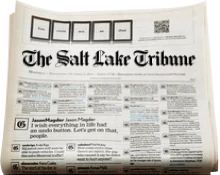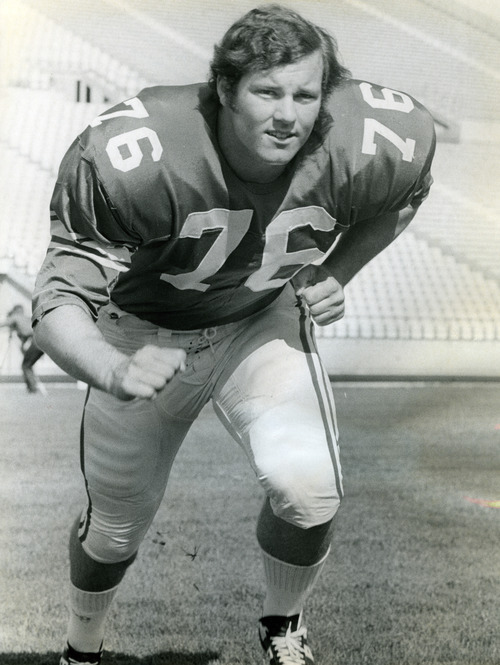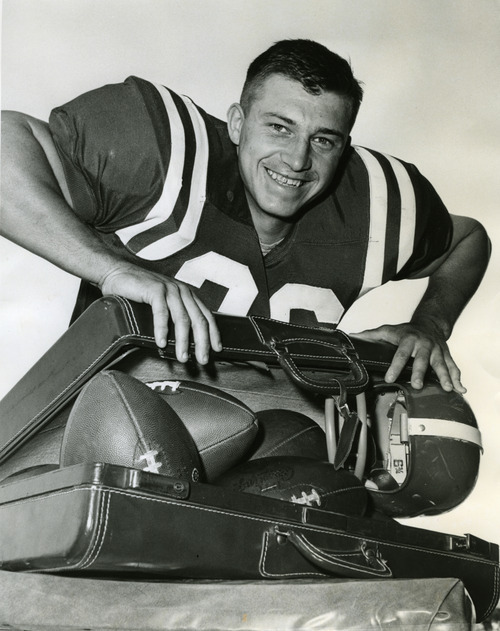This is an archived article that was published on sltrib.com in 2011, and information in the article may be outdated. It is provided only for personal research purposes and may not be reprinted.
Arlington, Texas
The stage is cleared of the once-laughable franchises and transplanted teams that have infiltrated the Super Bowl lately.
In the ultra-modern venue of Cowboys Stadium, two of pro football's genuine icons will meet in Sunday's Super Bowl XLV. Whatever freshness and variety the likes of New Orleans, Indianapolis, Arizona and Seattle provided in recent seasons, nothing could match a Super Bowl pairing of teams that have played pro football in their towns for a combined 170 years.
The presence of the Green Bay Packers and Pittsburgh Steelers makes this Super Bowl historic, and not just because they're old. Two of the most successful, popular franchises in all of sports will create a matchup that's attractive to viewers and especially rewarding for Allen Jacobs and Gordon Gravelle.
"This is 100 percent, solid NFL all the way," said Jacobs, a former University of Utah running back who won a championship with the 1965 Packers.
"Two old-time, beginning, founding franchises … it's great for the game," said Gravelle, an ex-BYU offensive lineman who won two Super Bowls with the Steelers in the mid-1970s.
The impact of these franchises is felt throughout the NFL. Green Bay is credited with having introduced the public-address system, pass patterns, cheerleaders and tailgating. Pittsburgh more recently influenced the "zone blitz" defensive strategy and the Rooney Rule, requiring teams to interview minority coaching candidates.
The Packers have won 12 titles, including three Super Bowls. The Steelers claim a record six victories in the Super Bowl era, having moved to the AFC when two leagues merged in 1970. So there are valid reasons for Green Bay's being known as "Titletown" and Pittsburgh marketing itself as the "City of Champions."
Jacobs and Gravelle played for legendary coaches Vince Lombardi ("the only person that really terrified me," Jacobs said) and Chuck Noll ("We were kind of afraid of the guy," Gravelle said).
Each player was a teammate of nine Pro Football Hall of Fame members. They know what it's like to be part of a great legacy, and they'll enjoy every bit of the buildup to this Super Bowl.
"The legend lives on," said Jacobs, a longtime Salt Lake City resident. "If I've got any claim to fame, it's that I played for Vince Lombardi."
Well, besides driving a car just like Lombardi's. With a choice between the NFL and AFL after playing for Utah's Liberty Bowl team in 1964, Jacobs told the Packers he would join them if they agreed to his asking price: $15,000, plus the kind of car Lombardi drove. They delivered, although Jacobs should have known it would be a conservative Pontiac.
What he overlooked was the talent at his position: The Packers had Jim Taylor, Paul Hornung and Elijah Pitts. "What were my chances of playing?" Jacobs said, laughing at the memory. So he carried the ball only three times all season, but played regularly on special teams and helped the Packers take a 23-12 win over Cleveland for the NFL championship, the team's third title in five seasons.
Jacobs missed the Packers' first Super Bowl appearance by one year, being traded to the New York Giants during the '66 preseason. Gravelle also was dealt to the Giants, but only after starting at offensive tackle in the Steelers' first two Super Bowl victories, over Minnesota and Dallas.
Noll succeeded in "developing a team, not just a collection of superstars," said Gravelle, now a home builder in Northern California. "We had a chemistry on that team that lasted the whole decade of the '70s. … No one was above anyone else. We all felt very important, with no differentiation between [quarterback Terry Bradshaw] and an offensive lineman."
Gravelle is proud to have helped establish Pittsburgh's tradition, and Jacobs appreciates his part in Green Bay's success. They'll be watching Sunday, when these teams will go about their business the same way as always — with one notable exception. For the first time, no cheerleaders will appear in the Super Bowl. The Steelers have never sponsored such a group and, while the Packers brought cheerleaders into the NFL in 1931, they no longer field a squad.
These old-fashioned franchises know what works for them, even if that occasionally means changing their minds.
Twitter: @tribkurt —
Green Bay Packers
• In his only season with the team (1965), former University of Utah running back Allen Jacobs played with nine Pro Football Hall of Fame members: Herb Adderley, Willie Davis, Forrest Gregg, Paul Hornung, Henry Jordan, Ray Nitschke, Bart Starr, Jim Taylor and Willie Wood. Coach Vince Lombardi also was inducted.
• Former Utah receiver Marv Fleming and ex-Utah State defensive lineman Lionel Aldridge each started for the Packers' first two Super Bowl winners. BYU's Jim McMahon was a backup quarterback for Green Bay's most recent champions.
—
Pittsburgh Steelers
• During his five seasons with the team (1972-76), former BYU offensive tackle Gordon Gravelle played with nine Pro Football Hall of Fame members: Mel Blount, Terry Bradshaw, Joe Greene, Jack Ham, Franco Harris, Jack Lambert, John Stallworth, Lynn Swann and Mike Webster. Coach Chuck Noll also was inducted.
• Gravelle, former BYU defensive linemen Brett Keisel and Chris Hoke and ex-Utah offensive lineman Chris Kemoeatu each has played for two Pittsburgh teams that won Super Bowls, although Kemoeatu was inactive for one of those games.





